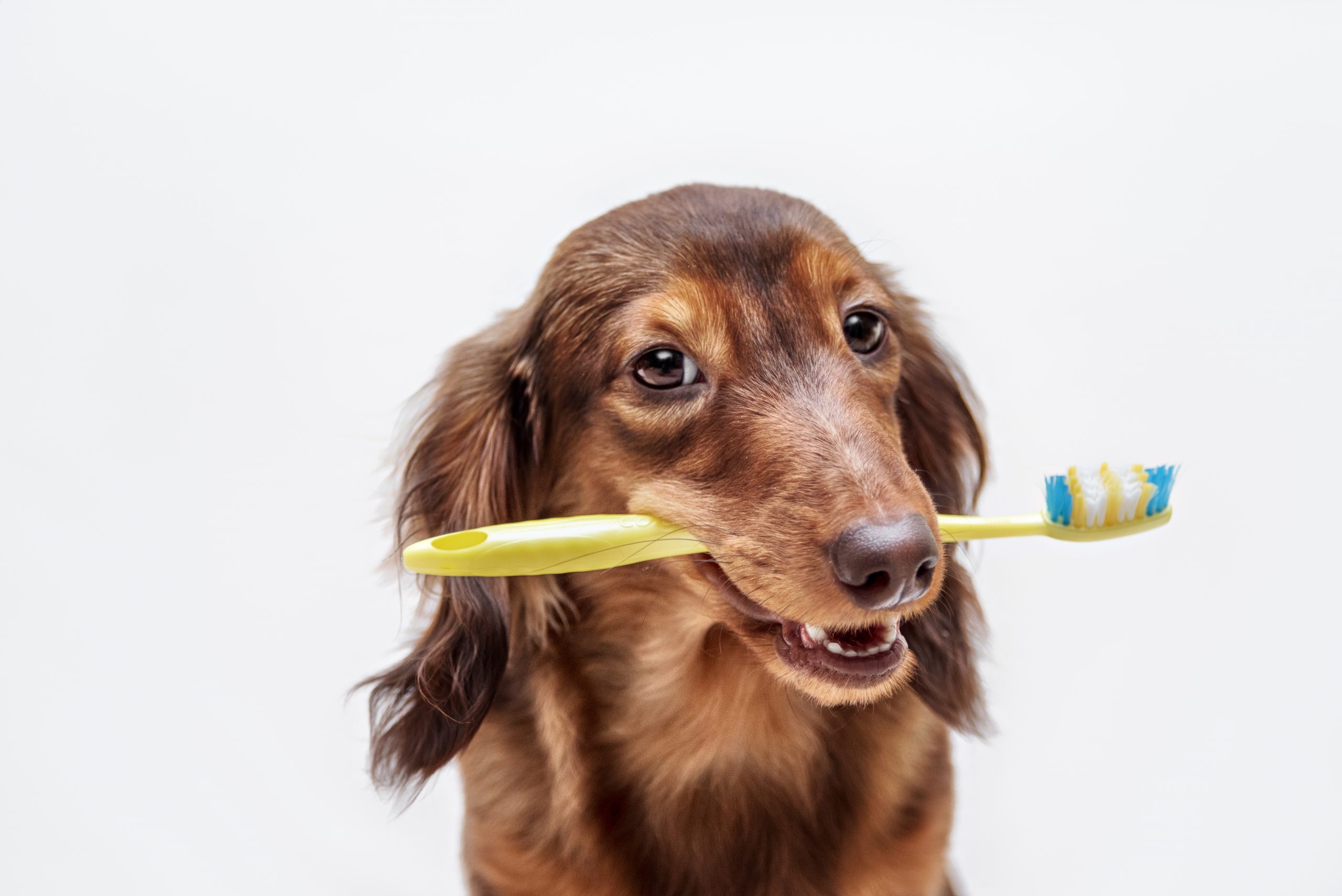Did you know that 85% of cats and dogs have some degree of periodontal disease? The mouth is an incredible source of pain, but animals tend to be very stoic and conceal their discomfort, even when they are hurting from rotten, loose, or abscessed teeth. They may, however, as the disease progresses, present with a few clues to indicate a potential problem inside the mouth:
- Excessive drooling
- Chewing only on one side of the mouth
- Dropping food
- Pawing/rubbing the mouth
- Swelling under the eye
- Foul breath
Every plaque cell carries upwards of 1,000 different species of bacteria. Since there are thousands upon thousands of cells in the mouth, bacteria builds up quickly into the millions. When we brush our teeth, we decrease the amount of plaque and bacteria. Unfortunately, many pet owners do not brush their pet’s teeth, leading to the constant presence of bacteria counts in the millions. As that plaque and bacteria harden, it creates tartar on the teeth. Tartar, or calculus, forms as a brown calcified layer on the surface of the tooth. Once tartar forms, no amount of brushing will eradicate it. A dental cleaning under anesthesia will be necessary to remove heavy tartar and protect the teeth. The longer tartar sits on a tooth, the more vulnerable that tooth becomes. This can lead to severe gum recession, stomatitis, oral ulcers, pain, infection or abscess, and eventually tooth loss. In extreme cases, broken bones or bones loss can occur as the infected tooth roots eat away jaw strength.

Many pets suffer from health problems that can be eased by a proper oral health regimen.
Poor oral hygiene has a domino effect on the body. Imagine all that bacteria seeping into your esophagus, heart, stomach, liver, and kidneys every time you swallow. Periodontal Disease can damage organs as they attempt to filter out this bad bacteria. Many pets suffer from health problems that can be eased by a proper oral health regimen. Everything starts in the mouth, so why not treat the source of the problem?
Brushing your pet’s teeth daily is your best defense for preserving the teeth and reducing the need for anesthetic dental cleanings. Some animals are more prone to dental disease and may still need dental cleanings even with brushing. Here are some recommendations to help keep your pet’s mouth healthy:
- Brush the teeth with a pet formula Do not use human toothpaste as it is designed to spit out and pets will swallow it.
- Wysong dental additive to food.
- Oxyfresh Water Additive (this product does not contain dye).
- Raw bones—Raw, raw, raw…this means not
- Raw food as a bedtime treat.
- A proper diet that is low in sugar.
Anesthesia is not without risk, no matter the age of your pet. Before a dental cleaning can be performed, we require a blood sample to determine if the liver, kidneys, and other organs are functioning healthy for anesthesia. While your pet is under anesthesia, we will also examine the gingiva, tongue, and other aspects of the mouth to assess if there are any abnormalities present, such as a tumor or ulcer. Occasionally, the doctor may find teeth that need to be extracted due to bone loss, rot, fracture, or another medical reason. Your pet will also receive a nail trim at no additional charge while they are asleep. A dental cleaning under anesthesia gives you, as the pet owner, a fresh slate in which to start your dental care at home.
During the month of February, we are offering a 10% discount on dental cleaning for National Pet Dental Month. This discount is on dental cleaning only and does not apply to blood work, extractions, medication, or additional services. Every pet who receives a cleaning during February will go home with a complimentary toothbrush. To find out more information, please call the office at 262-534-9392.
